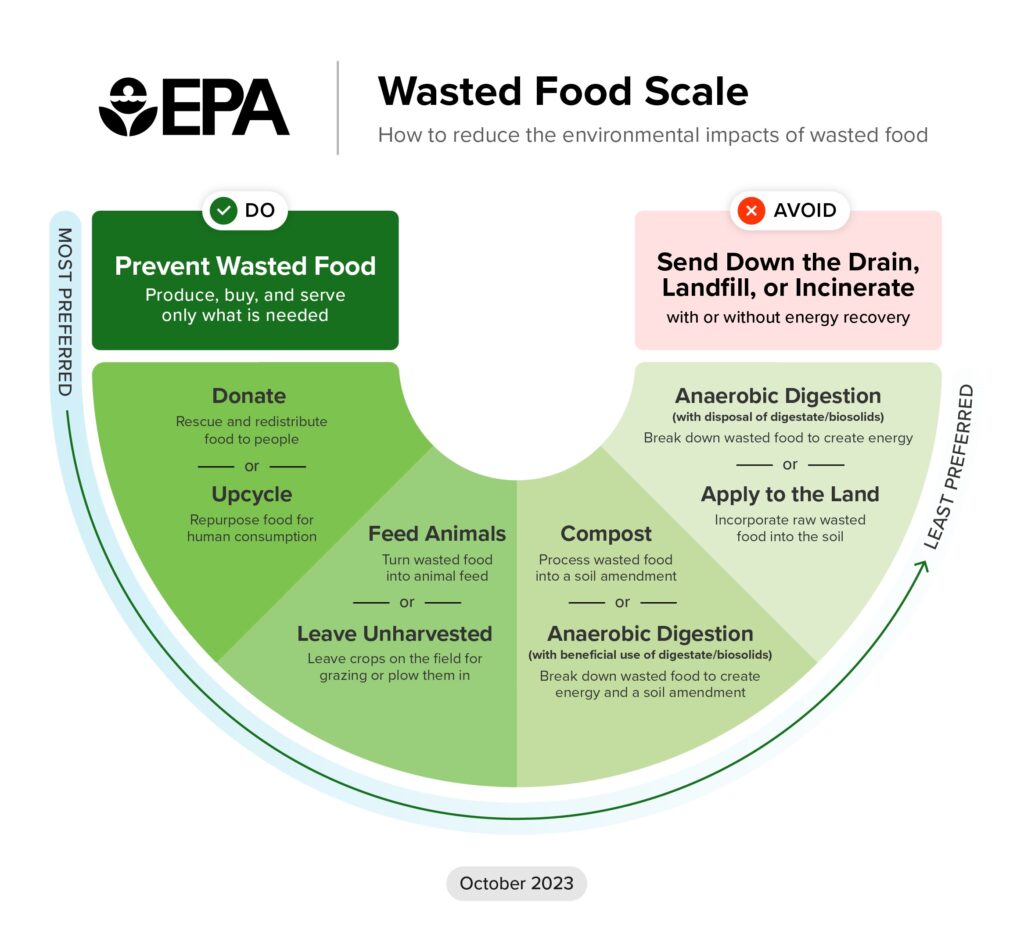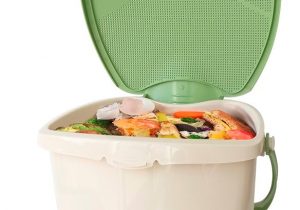IN SHORT: Food production is resource intensive, so when we waste an apple for instance, we also waste all the water, energy, fuel, labor and love that went into producing that apple. Tossing food into a compost bin alleviates guilt but still uses up all those resources, without feeding anyone. Shockingly, 40% of the food grown in the US is never eaten! Wow.
Worse yet, when food is sent to landfill, the absence of oxygen means the food creates methane which when released into the atmosphere creates a greenhouse effect up to 80 times greater than CO2 over a 20-year period. In terms of greenhouse gasses, about 80% of those are produced before food gets to the end of its life.
While composting food is a step better than tossing food into the landfill, there are better options. The Wasted Food Scale seen here was developed by the U.S. EPA. It is arranged to show the most preferred options for wasted food at the top left and least preferred to the far right. They are arranged this way because of the ever-increasing waste of natural resources, time and money as food continues through the options for recovery.
It follows the old mantra of Reduce, Reuse and Recycle, where reduction is the priority. No Food Left Behind’s goal is to encourage Corvallis residents to prevent wasting food that could be eaten. We provides tools for you to buy, store, and prep food in ways that can help reduce that waste. Learn more at our What To Do page.
We encourage you to use your yard waste / mixed organics cart provided by Republic Services if you are throwing food out as garbage. Any food or other items such as yard debris you place in this bin in Corvallis goes to the Pacific Region Compost Facility near Adair Village.


